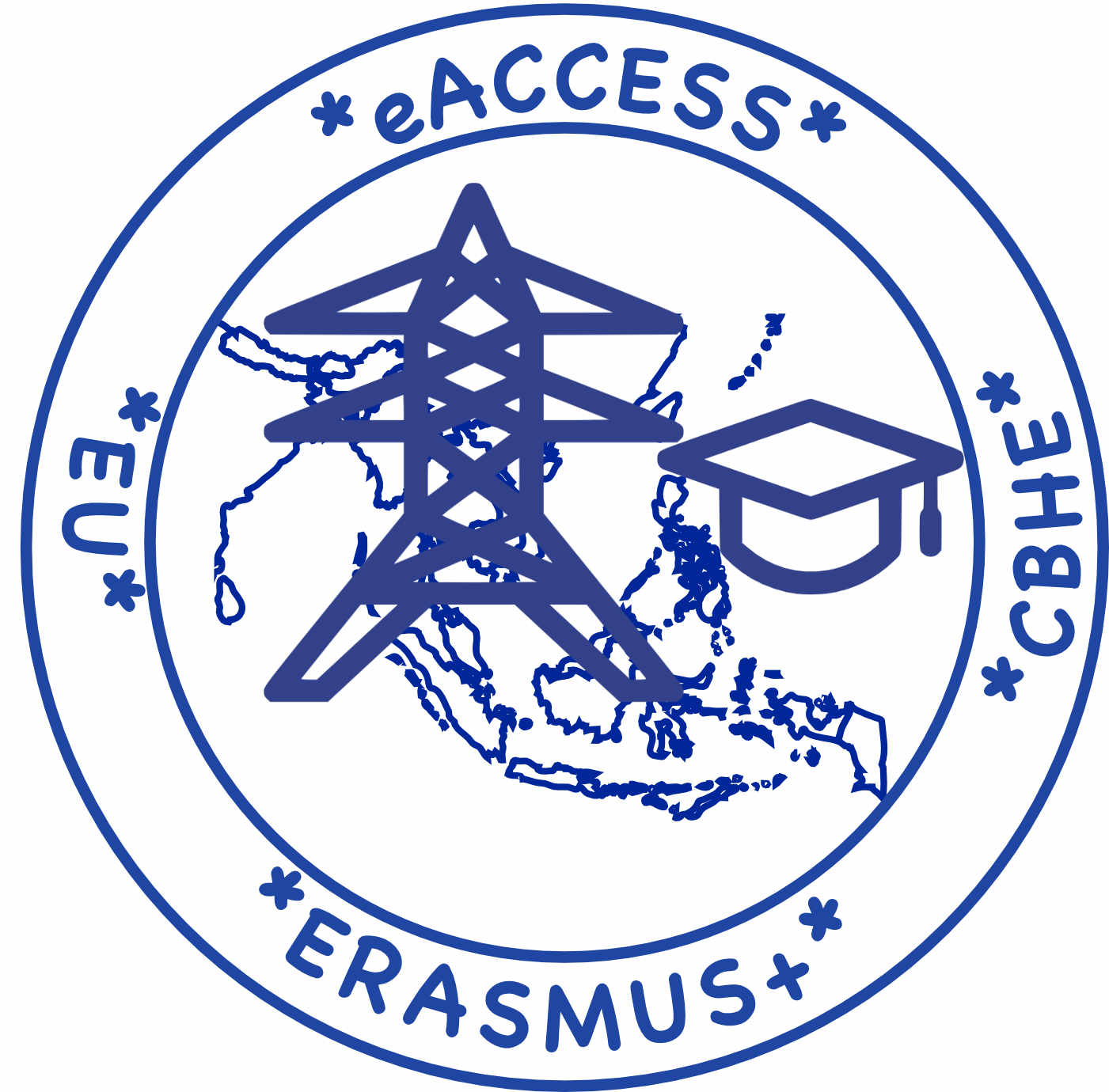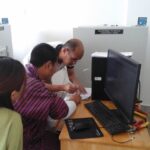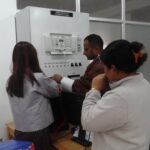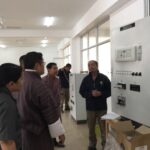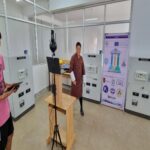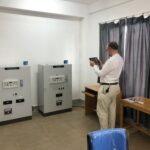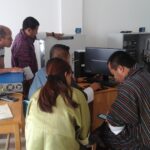Switchgear and Protection Laboratory (eACCESS-SGPL)
Supported by the Erasmus+ Programmed of the European Union: Capacity Building within the Field of Higher Education eACCESS Project number: 610041-EPP-1-2019-1-PL-EPPKA2-CBHE-JP
(EU-Asia Collaboration for accessible Education in Smart Power Systems)
Purpose
One of the pillar in eACCESS project is development of Switchgear and Protection laboratory. As a member of eACCESS project supported by Erasmus+, College of Science and Technology, Royal University of Bhutan (RUB) proposed a laboratory focused on Switchgear and Protection. The development of lab is important as most of the graduates joins Power company where protection is important to have a reliable power supply. Electrical Engineering Department of CST, RUB is focus on power system, so this developed laboratory will be capable to support the teaching and learning in the areas of the power system and power system protection and control.
Switchgear and Protection laboratory as the newly developed laboratory consists of Generator protection relays, distance protection relays, transformer protection relays, feeder protection relays, and Relay test kit. Some of the practical which will be conducted in the proposed laboratory, includes Distance Protection, Directional and non-directional Overcurrent, Under voltage protection, Transformer Differential Protection, Directional/non-directional Earth fault, Directional and non-directional Overcurrent, Reverse Power Protection, Generator Differential Protection, bus bar protection. The studies and the practical analysis of the relays will help students in designing a stable and efficienct power system networks in the country and the region.
Descriptions of equipments
Bus bar protection test bench
The bus bar protection relay used in this test bench is MiCOM P746. It is having 7 CT inputs. These CT inputs provides the status of bus bar which is then compares incoming R-phase current to outgoing R-phase current to achieve differential and bias current. These differential and bias current use for detecting fault and then isolate the bus bar from the abnormal condition. It also has binary inputs which are optically coupled and binary outputs which can be used for tripping the breakers etc. The relay is programmable to suite the requirement at site. In this panel, the relays are configured or programmed to suite the testing of all protection functions available in the relay. The protection settings for each function such as differential, for example can be calculated by considering any rating of the bus bar say 92MW for instance.
CMC356 omicron secondary injection kit
The secondary injection for protection testing is the source that mimics the fault conditions in the system being protected. The secondary injection kit called OMICRON CMC 356 is used for creating faulted conditions in testing relays. This kit has 4 voltage sources and 6 current sources. Additionally, it has binary inputs and binary outputs. These voltage and current sources can be used for injecting voltages from -110V to 110 V AC as normal voltage and beyond 110 V as abnormal condition. Similarly, currents can be varied from -1A to 1A for CT having output 1 A and -5A to 5A for CT having 5A at its secondary.

Distance/line protection test bench
The distance protection relay used in this test bench is MiCOM P443. It has 8 CT inputs and 4 PT inputs. These CT and PT inputs provides the status of line which is then compared with the protection settings and then isolate the line from the abnormal condition. The relay has all protection functions embedded which are processed numerically from current inputs and voltage input. It has 16 binary inputs optically coupled and 24 binary outputs which can be used for tripping the breakers etc. The relay is programmable to suite the requirement at site. In this panel, the relays are configured or programmed to suit the testing of all protection functions available in the relay. The protection settings for each function such as impedance, for example can be calculated by considering any conductor of the line say 220kV for instance.
Generator protection test bench manual
The generator protection relay used in this test bench is MiCOM P343. It is having 8 CT inputs and 4 PT inputs. These CT and PT inputs provides the status of generators which is then compared with the protection settings and then isolate the generator from the abnormal condition. The relay has all protection functions embedded which are processed numerically from current inputs and voltage input. It has 16 binary inputs optically coupled and 14 binary outputs which can be used for tripping the breakers etc. The relay is programmable to suite the requirement at site. In this panel, the relays are configured or programmed to suite the testing of all protection functions available in the relay. The protection settings for each function such as differential, impedance, for example can be calculated by considering any rating of the generator say 84MW for instance.
Transformer protection test bench
The transformer protection relay used in this test bench is MiCOM P642. It is having 8 CT inputs and 1 PT inputs. These CT and PT inputs provide the status of transformer which is then compared with the protection settings and then isolate the transformer from the abnormal condition. The relay has all protection functions embedded which are processed numerically from current inputs and voltage input. It has 8 binary inputs optically coupled and 8 binary outputs which can be used for tripping the breakers etc. The protection settings for each function such as differential, impedance, for example can be calculated by considering any rating of the transformer say 20MVA for instance.

